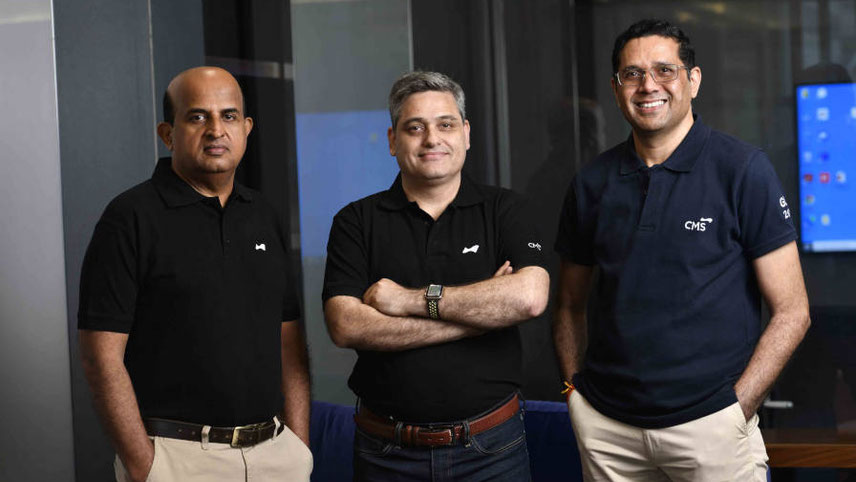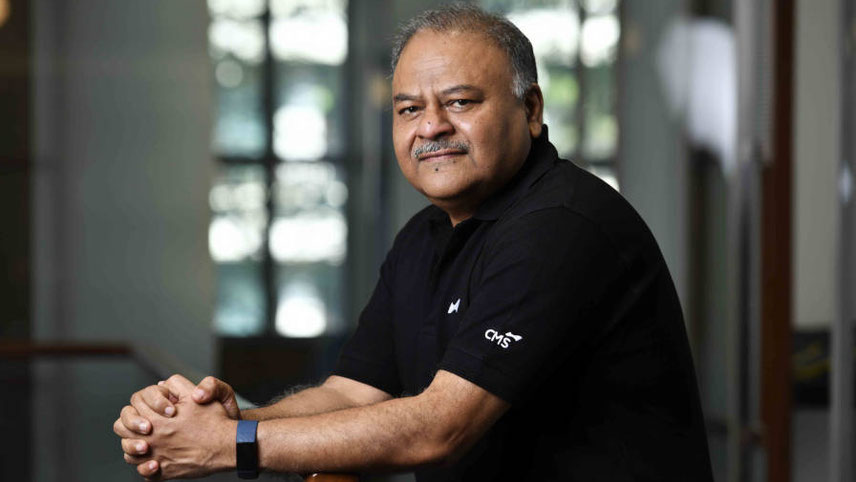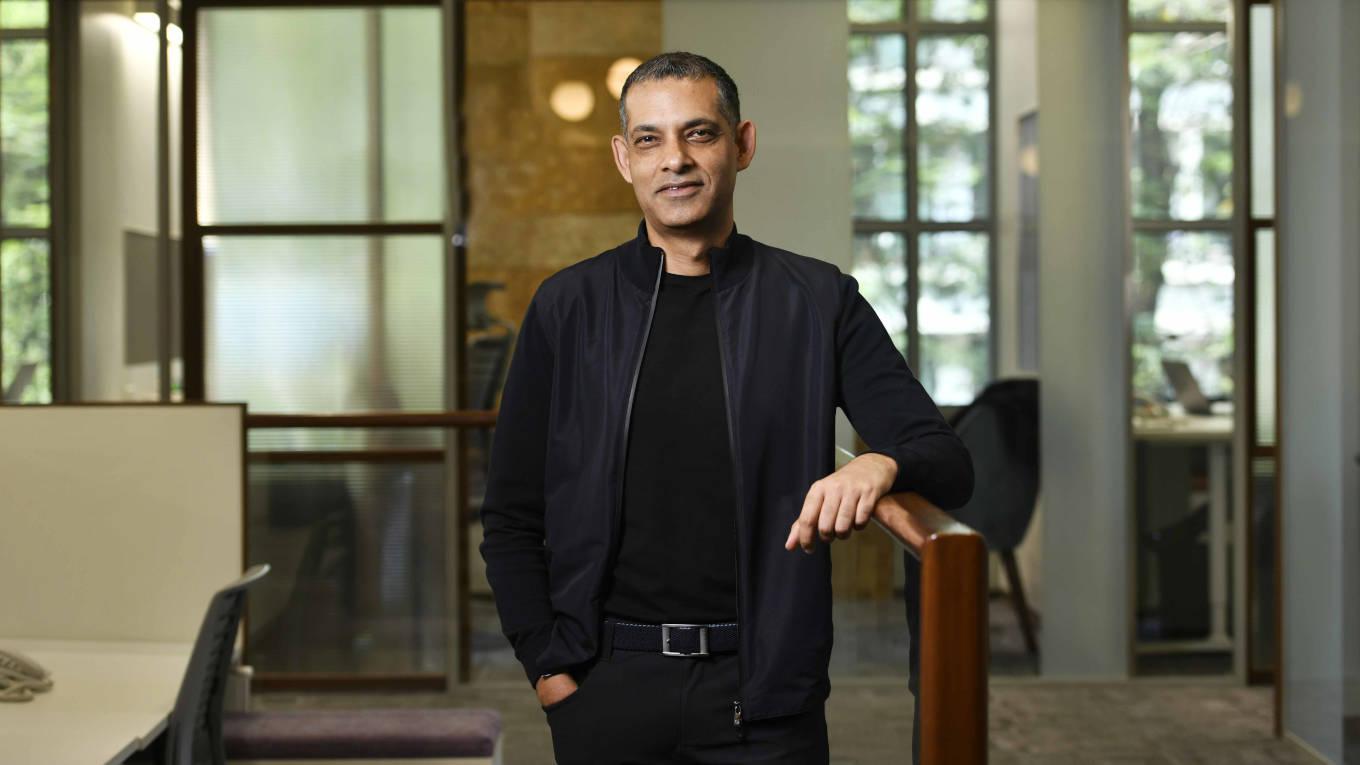-

Raghavan: creating in-house solutions
Technological innovator
Driven by the need to seamlessly handle cash across different e-commerce vendors, banks, and retailers, CMS simultaneously invested heavily in technology to reconcile the cash balances with vendors and banks in real time. After loading an ATM with cash, the CMS Agile is able to quickly reconcile the cash infusion with the respective bank, thus enabling CMS to improve efficiency. CMS’s in-house lab seamlessly integrates cash reconciliations, which has improved efficiencies across all platforms.
“We have created a lab for technology solutions for ATM cash management. While the rest of the ecosystem is getting more evolved on the back of RBI compliance, we are able to create software and sell it to banks as a solution now. CMS Algo is a solution that we created in-house a few years back,” points out Anush Raghavan, President – Cash Management Business, CMS Info Systems.
Prior to turning around CMS, Kaul was, at the age of 33, one of the youngest CEOs of Microsoft and also corporate India. He served as a member of the RBI committee for currency movement and board member of Confederation of ATM Industry, while at CMS.
New revenue streams
Under Kaul’s leadership, CMS has invested in new revenue streams while upgrading technological capabilities. The firm embarked on expanding its services from just managing cash to the lucrative business of managed services that include ATM management, remote monitoring, and multi-vendor software solutions for ATMs.
In fact, banks have been migrating to new age tech through the last mile connectivity route to customers, and advanced ATM technology such as the ones available with CMS will play a key role in growing this market. Apart from standard cash-withdrawing activities, banks will be able to roll out more services and also sell more products and offerings through ATMs.
Given the enormous opportunity, CMS even roped in Manjunath Rao, who headed an ATM operation in Singapore, to head its managed services vertical. With its investment in up-end technology over the last several years, CMS now has a good head start in the ATM managed services segment.
“Our managed services are largely where the banks give a multi-year contract. Think of it in terms of large tech services. If you look at any IT company they will go and sign a large client for six, seven or eight years. That’s the kind of contract they sign for managed services and ATM management because new technology keeps evolving and banks want to be on top of this,” points out Manjunath Rao, President – Managed Services Business, who has over 34 years of industry experience.
In addition, there are more growth drivers for the managed services business of CMS. India has a low penetration rate of around 22 ATMs per 100,000 adults, compared to the global average of 47 ATMs per 1,00,000 adults as of December 31, 2020.
Not only that, the government of India has undertaken initiatives aimed at increasing financial inclusion to give greater access to bank branches and ATMs. In particular, in semi-urban and rural regions ATM penetration is very low, at 15 ATMs per 100,000 adults as of December 31, 2020, while payments in cash continue to be the primary medium of transactions in India, accounting for approximately 89 per cent of all payment transactions in 2020, according to a Frost and Sullivan report.
Recently, the RBI also increased the interchange fee for ATMs from Rs15 to Rs17 to encourage banks to roll out ATMs. Interestingly, in the past two years, over 17,000 ATMs have been added in India as per the Reserve Bank of India. Out of this more than 10,000 ATMs have been added in rural and semi-urban areas, despite Covid-19 slowing economic activities.
-

Rao, Kilam and Khandelwal: ensuring cash reaches right destinations
“Large geographical pockets like Uttar Pradesh, Bihar, Jharkhand, Chhattisgarh, and Odisha almost have high single-digit to extremely low double-digit ATM penetration per 100,000 people. Those are also the geographies where the government is investing more time and money to drive financial inclusion because they have to be the drivers of GDP growth for the next decade. One would anticipate that financial channels and distribution also need to grow to keep pace with that,” notes Pankaj Khandelwal, president and CFO, CMS.
ATM business to accelerate
Not surprisingly, large public sector banks are increasingly rolling out ATMs. PSB banks have issued brown label ATM requests for proposals for over 20,000 ATMS, and according to market sources more proposals are on the anvil. The Frost and Sullivan reports suggest the number of ATMs are expected to increase by around 1.1 lakh to 3.65 lakh ATMs by FY27, at an annual growth rate of 6 per cent.
Besides, about two lakh ATMs are likely to be replaced over the next five years due to obsolescence and technology upgradation. In fact, several public sector banks are migrating to the CMS platform for a wider range of services and better customer experience.
This is one reason why the business of ATM management will continue to grow fast in India, translating into better managed services contracts for CMS. A Frost and Sullivan report notes that the market for managed services, which stands at Rs6,800 crore in FY21 is slated to reach a size of Rs17,090 crore by FY27, growing at annualised growth rate of 16.5 per cent.
One key component of the managed services business is the multi-vendor software (MVS) solution system. In 2019, CMS forayed into creating a multi-vendor software and is now a leading player in this segment. The multi-vendor software solution essentially enables financial institutions to maintain and enhance their ATM infrastructure for any new service they provide, allowing it to be also rolled out on their ATM networks.
In essence, it can upgrade more services while bringing cost efficiency to operations by eliminating the need to upgrade ATM software. CMS has already installed its multi-vendor solutions in over 44,000 installations for India’s largest public sector bank, the State Bank of India.
Till 2021, about 1.1 lakh ATMs have migrated to multi-vendor software out of 1.95 lakh ATMs. By 2027, all Public Sector Banks will migrate to the MVS mode indicated by the fact that five of the top tier banks in India, which include SBI, Axis Bank, HDFC Bank, ICICI Bank and IndusInd Bank have already moved over 1.1 lakh ATMs to the MVS platform.
CMS has also forayed into remote monitoring services for ATMs. This division does real time monitoring of ATMs for security, maintenance and cash replenishment if required. CMS has a centralised centre to monitor hundreds of ATM sites around the clock, and analysts expect the remote monitoring segment to grow at a CAGR of 25 per cent from FY21 to FY27.
“From a long-term perspective, our focus is in remote monitoring is just expanding to a wider set of ATMs and bank branches,” explains Kaul. “Today out of 2.5 lakh ATMs in the country, only about 80,000 ATMs are being remotely monitored, while two-thirds don’t have a viable solution. We have won almost every remote monitoring contract that we have participated in, in the last 12 months,” avers Kaul.
-

Singh: cash handling has been steadily increasing
Much like IT companies, CMS has won new contracts in brown label ATMs and remote monitoring and has an accumulated order book valued at over Rs2,000 crore. CMS won contracts for 3,900 brown label ATMs (March 31, 2021) and for remote monitoring of 14,920 ATMs.
In addition, CMS has a longstanding strategic arrangement with Hyosung TNS Inc to offer a full suite of bank automation products and has base of over 33,000 installed products, supported by a network of over 500 engineers across India, as of 31 March, 2021. CMS intends to build on this in the future and compete aggressively to win a larger share in the ATM managed services vertical.
The managed services business has added a spring in the revenue growth rate of CMS over the past two years. In fact, the managed services business has grown at a CAGR of 36 per cent from FY19 to FY21 to Rs364 crore, during the period affected by the pandemic. CMS’s other businesses, which includes card issuances among others, grew to R45.9 crore in FY21 posting a CAGR of 11 per cent from FY19 to FY21.
As CMS’s managed services contribution continues to increase, operating margins have started to show strong improvement. Over the past two years, while revenues grew at about 6.7 per cent compounded annualised growth rate (CAGR) despite Covid-19, net profits grew at a sharp pace of 32 per cent CAGR from FY19 to FY21. This healthy profit growth has resulted in strong cash generation with CMS having built cash and cash equivalents, bank balances and current investments of over Rs300 crore in its balance sheet.





































